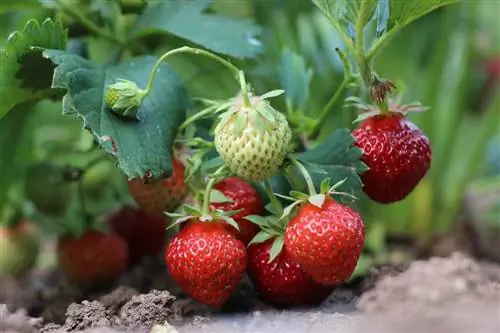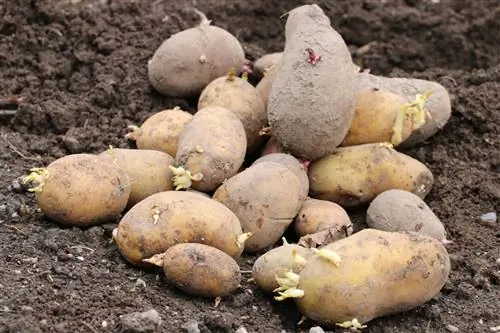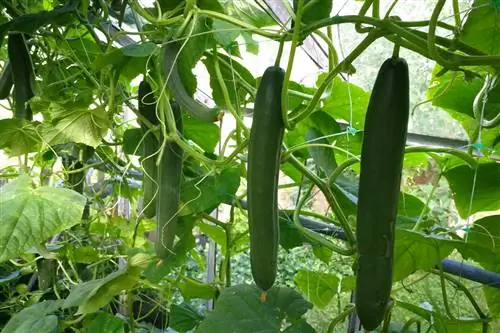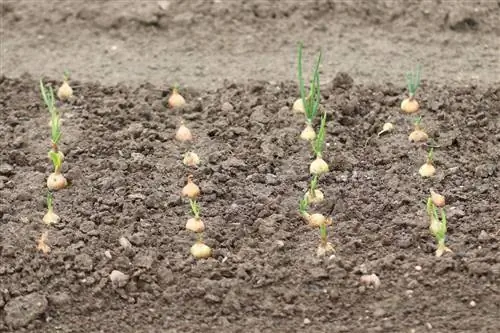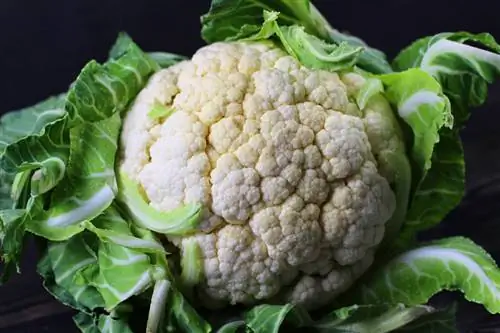- Author admin [email protected].
- Public 2023-12-17 03:39.
- Last modified 2025-01-24 12:45.
In the garden bed, the perennial strawberries (bot. Fragaria) get along very well in mixed culture with numerous flowers, vegetable plants and herbs as neighbors. On the other hand, strawberry plants don't like it at all when the types of cabbage that are common in this country grow nearby.
Mixed Culture
The trend is going back to nature, which is why ecological garden design is becoming more and more popular. This includes mixed culture, which is based on the natural arrangement of plants. However, it should be noted that only plants that fit together well are planted as neighbors. Otherwise, adverse reactions can occur, which, among other things, lead to weakened growth. If tall-growing plant neighbors stand next to the strawberries, the much smaller plants will be shaded too much. In addition, incorrect selection can lead to competition for nutrients and water. In addition, some plants, including the various types of cabbage, attract more pests such as cabbage flies.
- Adequate mixed culture promotes sustainable growth
- Has revitalizing effects on neighboring plants
- Pests can be deterred this way
- Helpful preventive measure against illnesses
- Serves as protection during the winter period
Note:
Strawberries form a shallow root system and therefore do not get along with neighbors whose root growth is very similar.
Plant neighbors from A to E
Bush beans (Phaseolus vulgaris)
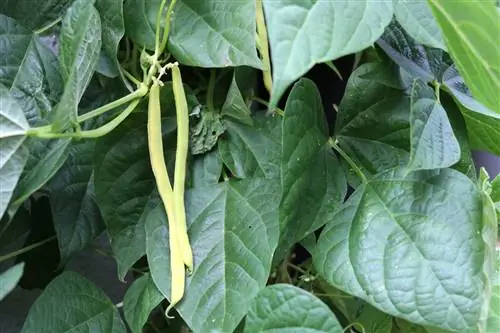
Bush beans are relatively undemanding legumes and grow close together so that they do not harass the strawberries as neighbors. The heat-loving plants produce a fairly early harvest if cared for properly.
- Frugal weak eaters
- Don't climb to heights
- Enrich soil with nitrogen
Tip:
Strawberries rely on a lot of sun for fruit development. Therefore, the selected neighbors must not compete with this need.
Borage (Borago officinalis)
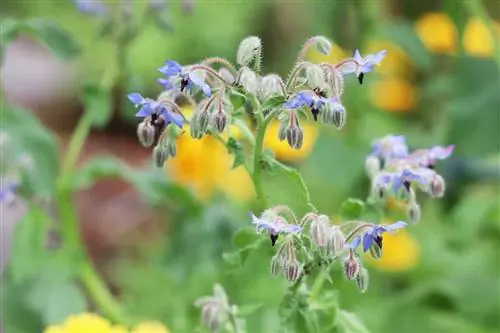
Borage is also known colloquially as cucumber herb. It has long been used as a spice and medicinal plant. Thanks to the blue star flowers, the plant is an ornament for every garden bed.
- Medium feeder with slender stature
- Supports flowering in strawberries
- Promotes the fertilization of plants
Dill (Anethum graveolens)
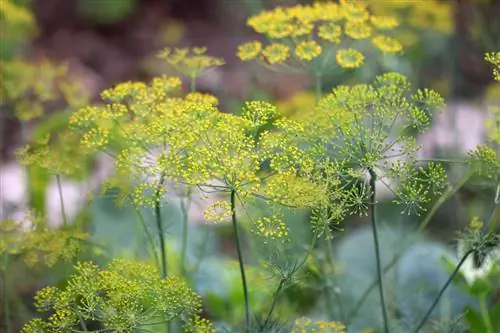
In this country, the aromatic-smelling dill is one of the most widely grown herbs. Both the seeds and the leaves and shoots can be used to prepare food and drinks.
- Weak feeder, grows upright with deep taproot
- Keeps unwanted insects and root pests at a distance
- Repels aphids, cabbage white butterflies and carrot flies
Elfenspur (Diascia)
The elf spur belongs to the figwort family and originally comes from South Africa. Thanks to its lush flowers, it is an attractive eye-catcher in the garden bed.
- Medium feeder with compact growth habit
- Flowering from June in eye-catching flower spikes
- Attracts bees for pollination
Plant neighbors from K to R
Chamomile (Matricaria chamomilla)
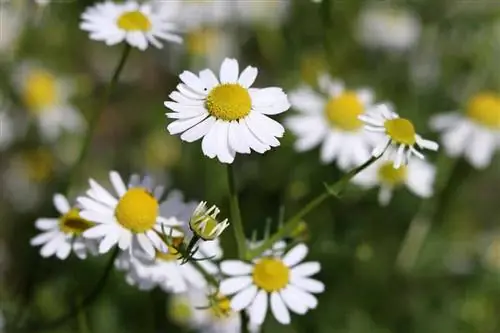
Chamomile belongs to the daisy family and is now found throughout Europe. The plant has been used as a medicinal herb since ancient times because it has calming and pain-relieving properties.
- Modest weak eater
- Exercises a revitalizing effect on plant neighbors
- Protects against dangerous fungal diseases
Garlic (Allium sativum)
Since garlic prefers warm and sunny locations, the plant with the spicy bulbs grows particularly well in wine-growing regions.
- Weak feeder with long flowers and leaves
- Counters infestations with lice and snails
- Protects with strong aroma and antiseptic effect
Parsley (Petroselinum crispum)
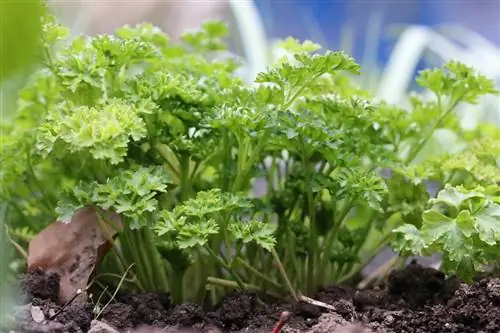
Parsley is a biennial umbelliferous plant and is very popular as a smooth or curly herb in the home kitchen.
- Undemanding weak eater
- Doesn't grow very tall
- Keeps lice away
Radish (Raphanus sativus var. Sativus)
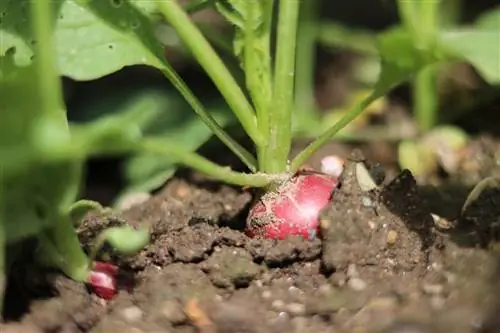
The radishes are fast-growing root vegetables that impress with a spicy and slightly spicy taste.
- Medium forager with thin stems
- Slightly serrated leaves, grow only 10 to 15 cm high
- Keep snails away from the vegetable patch
Marigold (Calendula officinalis)
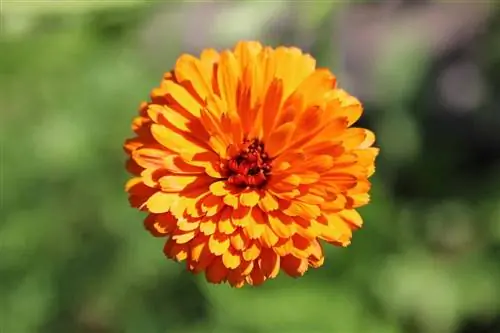
Marigolds enchant with golden yellow to crimson flowers that have healing properties.
- Easy-care low-eater
- Frees soil from wireworms and nematodes
- Exercises a cleaning effect on plant substrate
Plant neighbors from S to Z
Chives (Allium schoenoprasum)
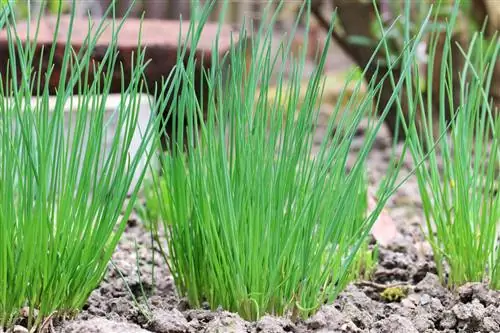
Chives are part of the leek family and are very popular as a herb in the kitchen.
- Weak feeder with long and narrow growth
- Repels the settlement of fungal spores
- Minimizes the outbreak of diseases
Spinach (Spinacia oleracea)

Spinach is an easy-care leafy vegetable that contains many he althy ingredients. Since the dark green leaves grow densely, it is important to keep a distance from the strawberry plants when planting.
- Medium feeder with leaves on thin stems
- Forms taproot that reaches deep into the ground
- Protects neighbors from snow while overwintering
Student flowers (Tagetes)

Student flowers belong to the daisy family and produce a beautiful abundance of flowers. The summer flowers are quite undemanding when it comes to care.
- Medium feeders with very different heights
- Repel snails and some types of beetles
- Counteract strawberry blossom pests and spider mites
Violet (Viola)

Violets bloom in bright colors and only grow to a low height. That's why the flowers are perfect as neighbors in mixed culture with strawberry plants.
- Weak feeder, grows about 15 to 20 cm high
- Delicate flowers with a pleasant scent
- Promotes the fruity aroma of strawberries
Lemon balm (Melissa officinalis)
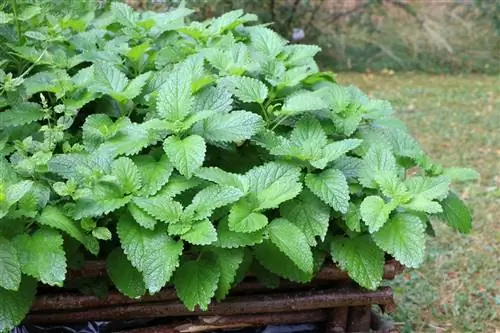
Lemon balm is a tried and tested medicinal plant whose flavor gives a fresh note to numerous dishes and drinks.
- Weak feeders with thin and upright stems
- Has revitalizing properties
- Serves as a bee pasture
Onion (Allium cepa)
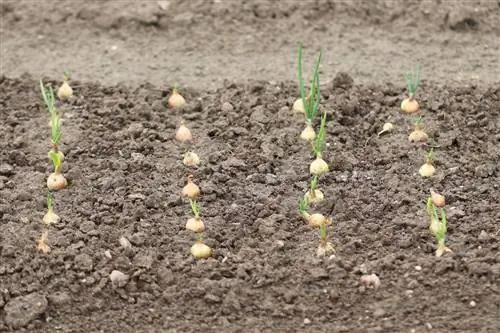
The onion belongs to the lily family and does not require high levels of care.
- Medium eater, onion greens are long and thin
- Forms a strong spicy scent
- This deters snails

